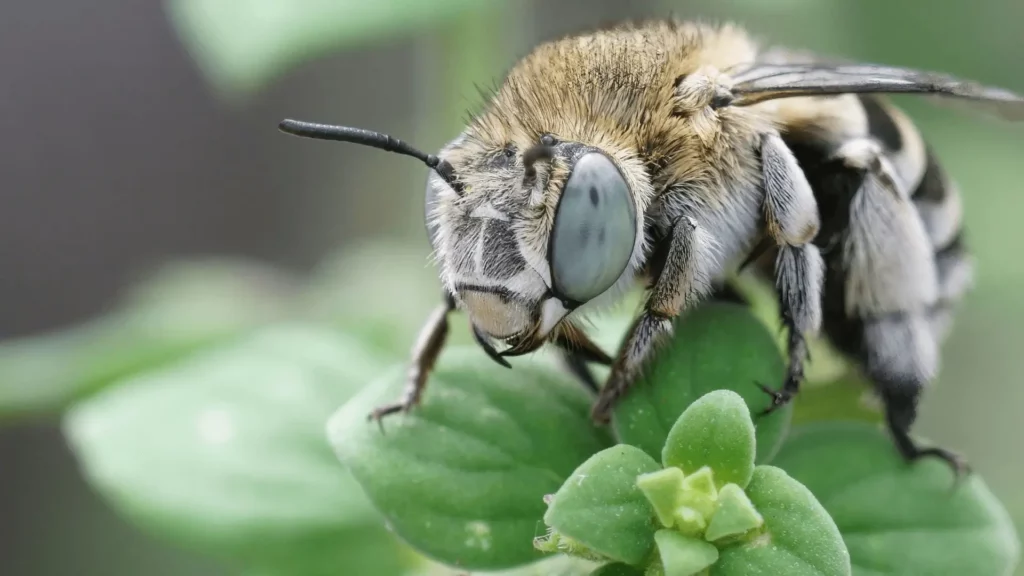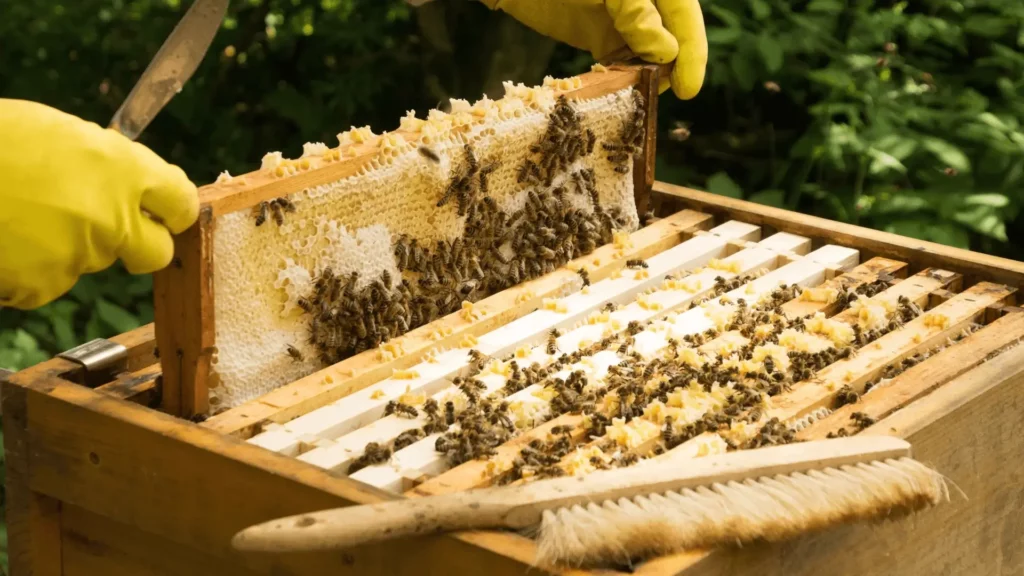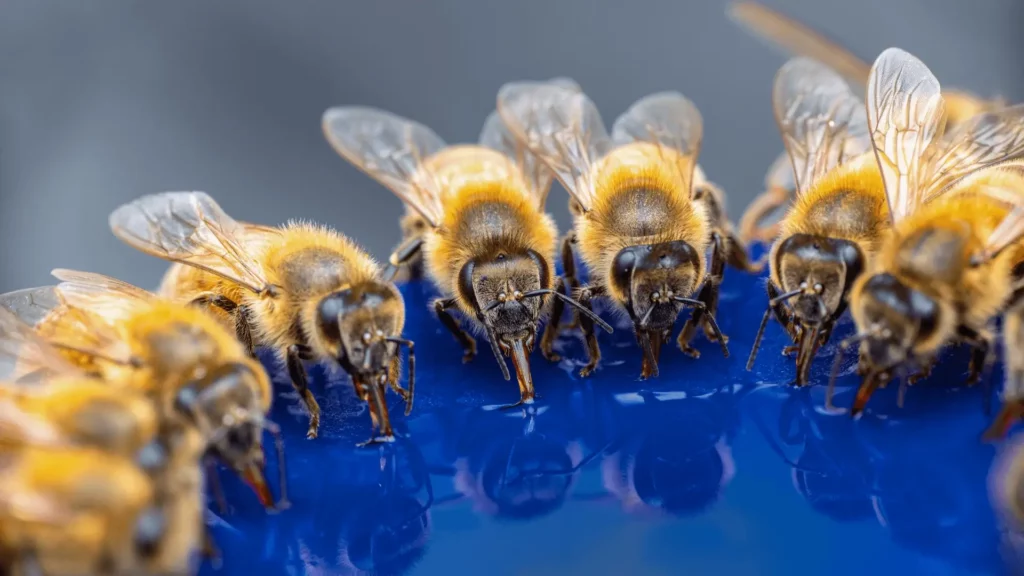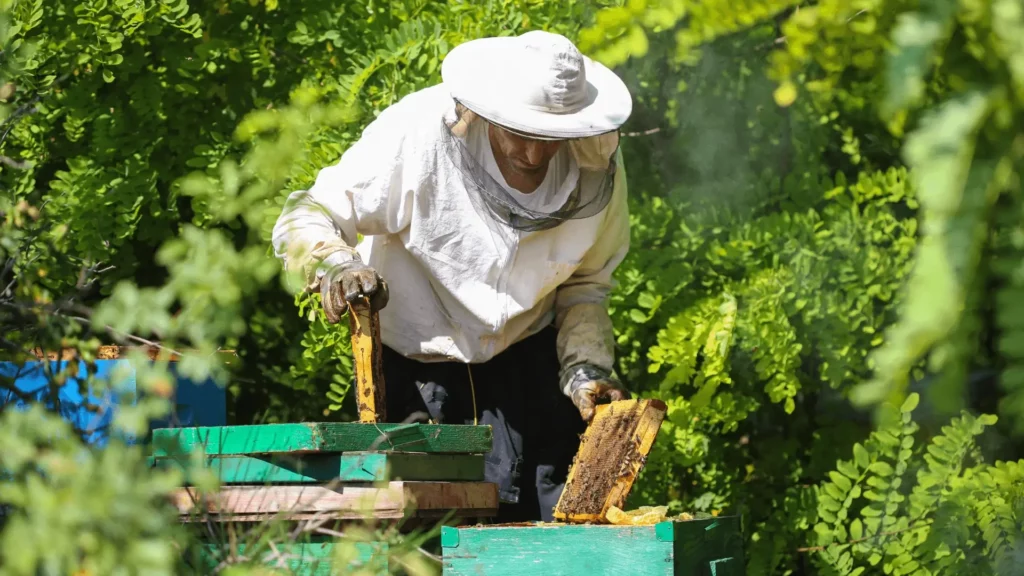
Have you ever marveled at the swift and agile nature of digger bees? These incredible insects, known for their unique nesting habits, have piqued the curiosity of many nature enthusiasts. If you’re one of those curious souls eager to delve into the world of digger bees, then you’ve come to the right place. In this comprehensive guide, we will unravel the mysteries surrounding these fascinating creatures and explore the various species found in the United States.
But why are digger bees so intriguing? What sets them apart from other bees? Well, prepare to be amazed! Digger bees have a knack for nest building, often choosing to create their homes in large aggregations. We’ll uncover the secrets of their nesting behaviors and discover the types of soil they prefer for their underground abodes.
Additionally, we’ll delve into the topic of pollination and learn about the variety of flowers that digger bees are particularly fond of. Their long tongues enable them to access nectar from deep flowers, ensuring a mutually beneficial relationship between the bees and the plants they visit.
So, whether you’re an aspiring bee enthusiast or simply fascinated by the wonders of nature, keep reading to discover the incredible life of digger bees.
Introduction to Digger Bees
Digger bees, also known as ground-nesting bees, are remarkable insects known for their unique characteristics and behaviors. These solitary bees are skilled at tunneling through the ground to construct their nests. With their fast flying nature, they zoom through the air with agility and speed. Digger bees are important pollinators in the ecosystem, contributing to the health and diversity of plant life. Let’s delve into the intriguing world of digger bees and uncover their fascinating secrets.
Characteristics of Digger Bees
They are known for their impressive speed and preference for nesting in large groups. These fascinating insects are fast flyers, darting through the air with agility and precision. They often choose to make their nests in large aggregations, creating a buzzing community of busy bees. This unique behavior sets them apart from other solitary bees. Digger bees’ rapid flight and communal nesting habits make them truly fascinating creatures to observe.
Nests and Nesting Behavior
Digger bees, also known as ground-nesting bees, exhibit fascinating nesting behavior. These solitary bees construct their brood chambers underground, utilizing their strong mandibles to excavate tunnels in the soil. Once the underground chambers are dug, digger bees line them with a waterproof cellophane-like substance for insulation and protection.
When it comes to selecting flower species for their nests, these bees show preferences for a variety of flowers. These include native wildflowers such as coneflowers, asters, and goldenrods, as well as cultivated flowers like sunflowers and zinnias. By choosing a diverse range of flower species, digger bees ensure a steady supply of nectar and pollen for their offspring.
The nesting behavior of digger bees is truly remarkable, showcasing their resourcefulness and adaptability. By constructing their brood chambers underground and carefully selecting suitable flowers, these industrious bees create a safe and nourishing environment for their young.
Adaptations for Survival
They have remarkable adaptations that enable them to thrive in challenging environments. One such adaptation is their ability to survive in hard clay soil, which is typically difficult to burrow through. Their strong mandibles and powerful legs allow them to excavate tunnels and construct brood chambers underground.
Another adaptation of these bees is their long tongues, which enable them to reach nectar in deep flowers. This gives them an advantage in accessing nectar sources that other insects may find challenging to reach. By having long tongues, digger bees can efficiently gather nectar, supplementing their energy needs for their demanding flying activities.
These adaptations for survival showcase the incredible resilience and resourcefulness of digger bees, allowing them to thrive in different habitats and contribute to the pollination of various plant species.
Also read: Natural Beekeeping: Embracing Sustainable Practices
Brood Chamber Construction
They are skilled architects when it comes to constructing their brood chambers. This intricate process begins with the female bee excavating the soil to create a tunnel. Using her powerful mandibles, she carefully removes the soil to form a cylindrical shaft. Inside this shaft, she creates a series of individual cells using moist mud. Each cell is provisioned with a mixture of nectar and pollen, serving as a food source for the developing offspring. Once these cells are fully stocked, the female seals them off with a waterproof sealant made from her saliva and soil particles. This protective layer ensures that the developing bees have a safe and secure environment to grow. The entire construction process showcases the remarkable skills and ingenuity of these solitary digger bees.
Key points:
– Female digger bees excavate soil to create a tunnel for their brood chambers.
– Moist mud is used to create individual cells within the tunnel.
– Each cell is provisioned with a mixture of nectar and pollen.
– The cells are sealed with a waterproof sealant made from saliva and soil particles.
– The brood chamber provides a safe and secure environment for the developing offspring.
Nest Aggregations
These bees have a notable tendency to nest in large aggregations. This behavior offers several advantages for these solitary bees. By nesting together, these bees can benefit from increased protection against predators and more efficient use of resources. Additionally, aggregating in large numbers allows for greater opportunities for successful breeding and the exchange of important genetic information. This unique behavior not only showcases their social tendencies but also highlights the interconnectedness of these remarkable insects in their quest for survival.
Oily Substance Production
They display a fascinating behavior during nest construction – they produce an oily substance. This substance, secreted by specialized glands in their bodies, serves as a protective lining for the walls of their brood chambers. It acts as a barrier against moisture and helps maintain a stable environment for their developing offspring. This unique adaptation showcases the resourcefulness and ingenuity of these remarkable insects.
Also read: Exploring Bee Habitats: Where Do Bees Live and How to Support Them
Habitat and Range
Digger bees can be found in various habitats throughout the United States. They are well-adapted to a wide range of environments, including grasslands, meadows, gardens, and even urban areas. These bees prefer areas with well-drained soil, especially sandy or loamy soils. They can also tolerate and thrive in hard clay soil, unlike many other ground-nesting bees.
In terms of distribution, they can be found across the entire United States, with different species being more abundant in specific regions. Some species are more common in the Midwest, while others are prevalent in the Southwest or along coastal areas. The availability of suitable nesting sites and flowering plants greatly influences their distribution.
Understanding the habitat preferences and range of digger bees is crucial for conserving and supporting their populations. By creating suitable environments with appropriate soil conditions and a diverse range of flowering plants, we can help ensure the survival and well-being of these important pollinators.
Remember to always respect and observe these fascinating creatures in their natural habitats, as they play a vital role in maintaining the balance of our ecosystems.
Tips for Attracting Digger Bees
Creating a welcoming habitat for digger bees in your garden can help attract these fascinating insects. Here are some tips to ensure your garden becomes a haven for digger bees:
1. Plant a variety of flowers: These bees are known to have preferences for certain flower species. Include a diverse range of flowering plants in your garden to cater to their specific needs.
2. Provide nesting opportunities: These bees are ground-nesting bees, so ensure your garden has suitable areas for them to dig their brood chambers. Leave patches of bare soil or create designated areas where they can construct their nests.
3. Avoid pesticide use: Digger bees, like other native bees, are essential pollinators. Minimize the use of pesticides in your garden to protect these beneficial insects and their habitat.
4. Provide water sources: They require access to water for hydration. Providing shallow water dishes or small water features can attract them to your garden.
5. Create a sunny environment: They are attracted to sunny locations. Ensure your garden has ample sunlight for their foraging activities.
By following these simple tips, you can create an inviting environment for these bees and contribute to their well-being in your local ecosystem. Remember, fostering a habitat that supports these pollinators benefits not only them but also the overall health of your garden.
Also read: The Ultimate Guide to Identifying Common Types of Bees
Conclusion
Digger bees are fascinating insects known for their fast-flying nature and unique nesting habits. These ground-nesting bees prefer to construct their brood chambers underground and are often found nesting in large aggregations. Digger bees have adapted to thrive in hard clay soil and have long tongues that enable them to access deep flowers. They play a crucial role in pollination and contribute to the health of ecosystems. To attract digger bees to gardens, creating a suitable habitat with a variety of flowers is essential. By understanding and appreciating these remarkable insects, we can contribute to their conservation and ensure the continuation of their important ecological role.



